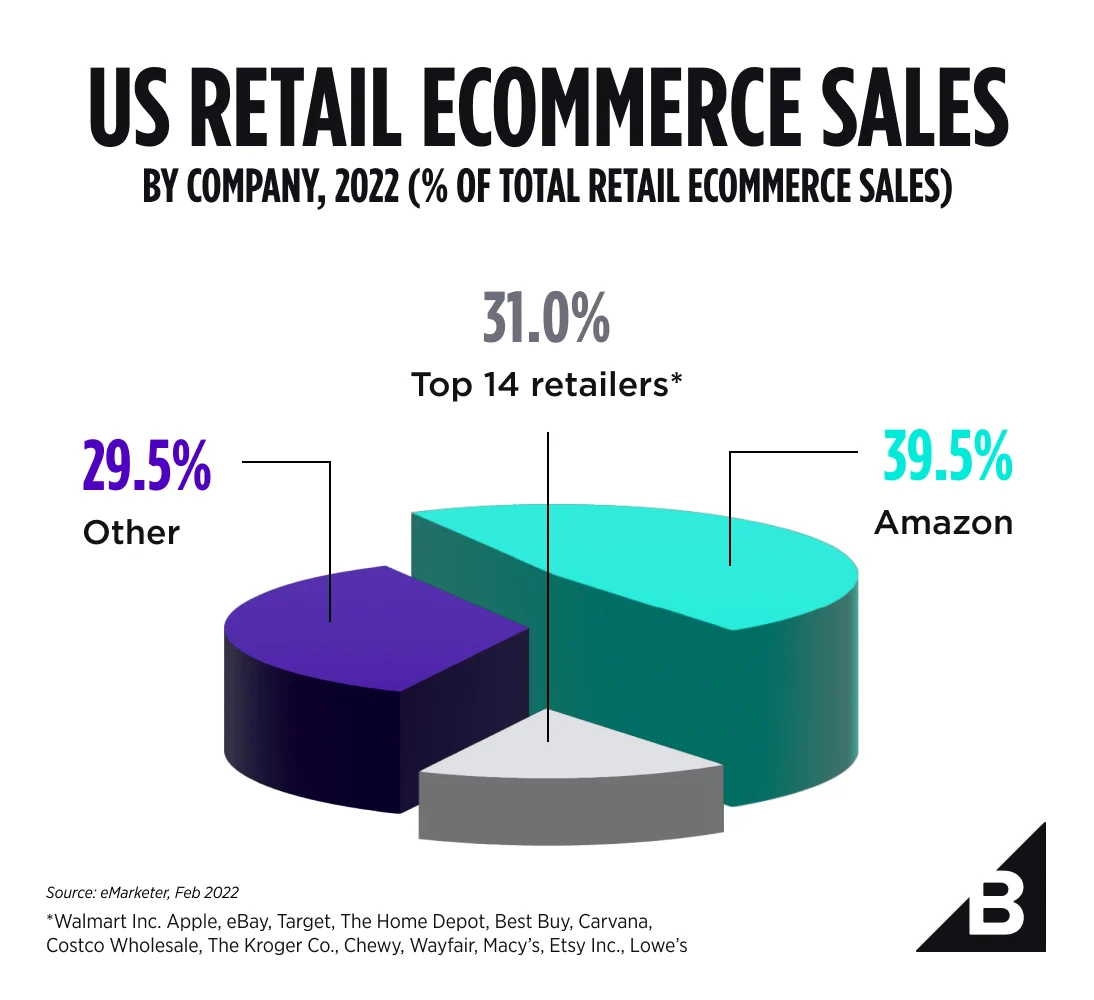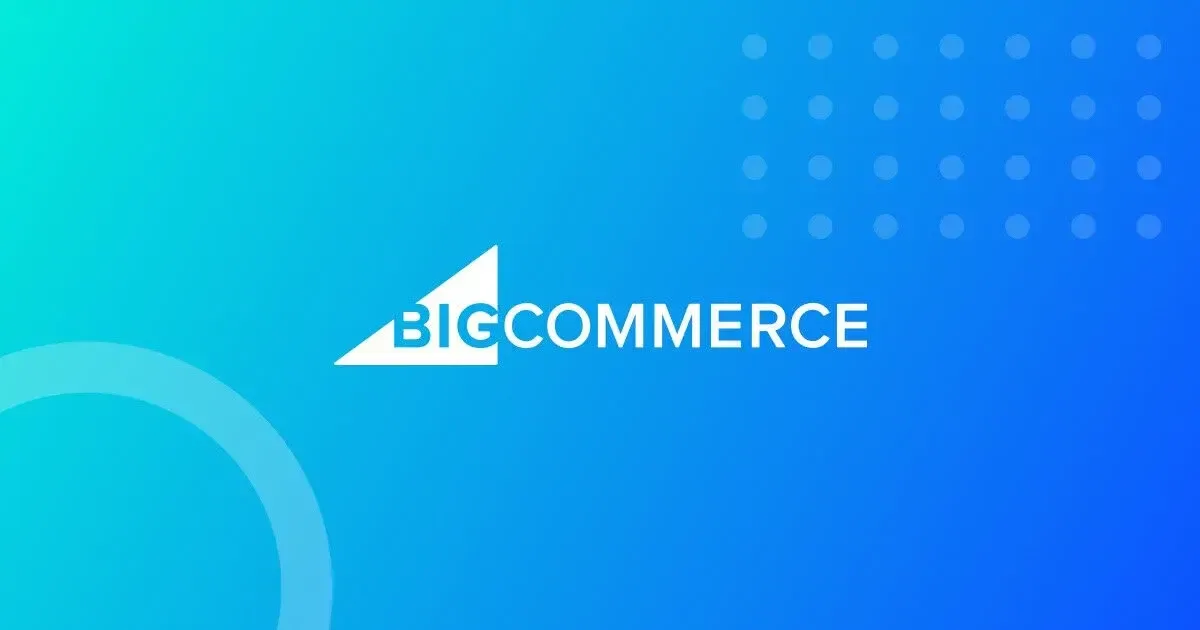by Haylee Reed
In 2023, retail ecommerce sales accounted for over 19% of overall retail sales worldwide, and Statista predicts that, by 2027, ecommerce will make up nearly a quarter of total global retail sales. Needless to say, ecommerce is on the rise.
But what is ecommerce exactly?
Ecommerce is the process of buying and selling products or services online. Short for “electronic commerce,” ecommerce encompasses all buying and selling that’s done on any digital device or platform, such as an online store, smartphone, online marketplace, or social media platform.
Whether it’s business-to-consumer (B2C), business-to-business (B2B), or business-to-consumer-business, (B2C2B), or physical or digital products, these online exchanges can come in many forms and occur across a variety of channels.
To fully understand ecommerce, let’s take a look at its history, growth, and impact on the business world. We’ll also touch on the main types of ecommerce business models, the potential benefits and challenges of selling online, and what tools you’ll need to get started.
Types of ecommerce business models
Generally, there are seven main models of ecommerce that businesses can be categorised into, each catering to different audiences and types of transactions. Let’s review each type in more detail.
Business-to-Consumer (B2C).
One of the most popular sales models in ecommerce, B2C ecommerce involves transactions made between a business and a consumer. For example, when you buy shoes from an online retailer, it’s a B2C ecommerce transaction. Some of the most popular ecommerce businesses today are B2C sellers — think Walmart, Target, or Sephora.
Business-to-Business (B2B).
Unlike B2C, B2B ecommerce encompasses online sales made between businesses, such as a manufacturer and a wholesaler or retailer. B2B is not consumer-facing and happens only between businesses. For example, many popular tech companies — such as Hubspot, Slack, and Microsoft — primarily sell their products and services to other businesses.
Consumer-to-Consumer (C2C).
One of the earliest forms of ecommerce, consumer-to-consumer involves the sale of products or services between customers. This can also include any provider that manages a C2C online transaction, such as those seen on eBay or Amazon. A prime example of a C2C sale is when someone uses an online marketplace, such as Facebook Marketplace or Craigslist, to sell a good or service to another person.
Direct-to-Consumer (DTC).
A newer model of ecommerce, DTC refers to a business that sells products directly to the end customer instead of going through a retailer, distributor, or wholesaler. One common example of D2C ecommerce is a subscription-based brand such as Netflix or Dollar Shave Club.
Consumer-to-Business (C2B).
C2B flips the traditional retail model on its head, in that individual consumers make their products or services available for business buyers. This could look like a photographer selling stock photos to an ecommerce business like iStock, or an influencer promoting its ecommerce marketing services to a business.
Business-to-government (B2G)
B2A covers the transactions made between online businesses and government entities or public administrations. For example, businesses can sell software related to legal documents or social security to local government agencies.
Consumer-to-government (C2G)
Similar to B2G, C2G ecommerce involves consumers selling goods or services to government organisations, and a C2G business is any ecommerce company that facilitates these transactions. For example, utility companies allow home and business owners to make online payments through a government website for energy-related services like electricity or gas. These businesses help foster better communication between consumers and government entities by simplifying payment processes and administrative tasks.
Sizes of ecommerce businesses
From small startups to large enterprises, ecommerce businesses can come in all sizes. Let’s look at the main four you’re likely to come across.
Enterprise.
An enterprise ecommerce business is a large-scale organisation that often has a more complex structure and needs. These businesses tend to offer a much wider range of products and services, as well as serve multiple audiences, including consumers and other businesses.
Badgley Mischka, for example, is a sky-rocketing global fashion label serving a wide customer base. Badgley Mischka is sold in some of the most prestigious stores in the world — from the likes of Neiman Marcus and Bergdorf Goodman to Saks Fifth Avenue and Nordstrom. With that, the brand needed a reliable, scalable ecommerce solution to power its online store — and ultimately chose BigCommerce.
“We're breaking our own records month after month,” said Katie Ouaknine, owner of Badgley Mischka Web. “We've increased marketing, and we have a tonne of integrations with a lot of your partners that have just made our business and our customers more happy, so we're finding a lot of success.”
Mid-market.
Mid-market businesses are exactly what they sound like — in the middle of small, mum-and-pop businesses and big-name enterprises. While there’s no set standard to identify a mid-market company, the size of a business can be measured through metrics such as annual revenue, net income, or number of employees.
A great example is Chair King Backyard Store, a Texas-based outdoor furniture retailer. As a large-scale furniture brand, Chair King offers white-glove delivery and localised selling, which meant it needed a customisable checkout experience. Turning to BigCommerce, the furniture brand found the features and functionality to enhance its user experience.
“BigCommerce is a better user experience for our customers, and it's also a better user experience for the team that's supporting it,” explained Kristen Brown, Director of Ecommerce for Chair King. “It's definitely pushed us forward even within our space. I think we have one of the more updated websites for the niche market that we're in.”
Small business.
Small businesses are sole proprietorships, partnerships or corporations that sell products or services and make less money and have fewer employees than large multinational corporations. The U.S. Small Business Administration further defines a small business in terms of employment (from 100 to over 1,500 employees) or average annual receipts over time (ranging from $1 million to over $40 million).
Moore Brothers Wine Company, for example, is a small business making big moves in the ecommerce space. With BigCommerce powering its commerce engine, the wine company has found the custom functionality to create robust customer experiences online.
“Now that we’re on BigCommerce, I can kind of relax a little bit and focus on other things,” said Terry Moore, Operations Manager at Moore Brothers. “Having that integration between all of the data we have and our point of sale database, and having a website that's comfortable and easy to use for our customers, that's terrific.”
Startups.
A startup is a business or project in the first stages of development, often built by an entrepreneur to pursue an innovative business model. Typically, a startup has less than 100 employees, however startups are often defined not by size but by profitability.
Molly Mutt, a company selling high-quality dog beds and crate accessories, is a prime example. With a lean team and a growing business, the brand needed an ecommerce platform that was fully customisable, easy to set up, and could scale with the business.
“We've enjoyed developing on BigCommerce because we can customise where we need to, but the base functionality is rock solid so we can always depend on that,” explained Matthew Coles, Account Director at Modelic, Molly Mutt’s agency partner. “But then we still have some freedom to do some interesting workarounds and customisations to make sure that we're servicing the end customer well.”
Growth of ecommerce
Ecommerce has come a long way since the CompuServe launch in 1969.
Driven by changes in technology and global circumstances, ecommerce is growing — and shows no sign of stopping.
Global internet access and adoption is rapidly increasing, with over five billion internet users worldwide.
Global retail ecommerce sales are projected to grow by 39% over the coming years, surpassing $8 trillion by 2027.
As of 2023, online marketplaces accounted for the largest share of online purchases worldwide — with Amazon leading the ranks.

What technology is involved in ecommerce?
When launching an ecommerce business, you’ll need a core set of tools and systems to ensure basic functionality, such as a robust ecommerce platform, a reliable payment gateway, and an efficient order management system. But as your business grows, you might want to incorporate advanced technologies like customer relationship management (CRM) software, inventory management systems, and marketing automation tools to meet more complex business requirements.
In this section, we’ll dive into the most common technologies that can help you build a successful ecommerce operation.
Ecommerce platform.
An ecommerce platform is the engine for your online business. Powering the back-end of your tech stack, an ecommerce platform contains the necessary tools to help you build and run your online store, such as payment processing, marketing tools, inventory management, and more.
Depending on your business needs and development capabilities, you may choose to host your site on a SaaS platform that provides pre-built, native commerce functionality. Or, you may choose to build your own site from the ground up. Luckily, BigCommerce offers the best of both worlds: the flexibility to create custom, cutting-edge user experiences as well as robust, out-of-the-box functionality.
Payment gateways.
A payment gateway is an essential functionality for completing online transactions, as it allows your ecommerce site to securely process payments.
Today, many customers expect businesses to offer flexible payment options at checkout. In fact, 13% of customers will abandon their carts if they don’t see enough payment methods available.
For many ecommerce businesses, this means offering an array of payment options, such as credit cards, digital wallets like Apple Pay or PayPal, Buy Now, Pay Later (BNPL), and even cryptocurrency.
Shipping and fulfillment.
Shipping and fulfillment are critical components of any ecommerce operation, ensuring that orders are efficiently delivered to customers.
With BigCommerce, merchants can streamline their operations using a comprehensive suite of tools, including real-time shipping quotes, automated order fulfillment, and seamless integration with major carriers like USPS, UPS, and FedEx. This ensures that customers receive their orders quickly and accurately, enhancing their overall shopping experience and driving customer satisfaction.
Data and analytics.
A successful online business leverages data and analytics to gain insights into customer behaviour, ecommerce trends, and overall business performance. By deploying advanced analytics tools, businesses can make informed decisions, optimise their strategies, and drive future growth.
Point-of-sale (POS).
Today, some of the best ecommerce businesses are the ones that create a seamless shopping journey across all touchpoints — both online and in-store. With a point-of-sale (POS) system, businesses can easily manage in-person transactions and seamlessly integrate orders and inventory between their ecommerce platforms and brick-and-mortar stores, allowing them to provide the unified shopping experience that customers expect.
Enterprise Resource Planning (ERP).
Enterprise Resource Planning (ERP) refers to software that automates business processes, from supply chain to customer relationship management (CRM) to — most often — financial systems. ERPs enable organisations to create a single source of truth for their data and connect unrelated APIs to each other for a larger, more cohesive enterprise system.
Product Information Management (PIM).
Today’s PIM software collects, manages, enriches and distributes product information across distribution channels, from your ecommerce storefront to social sales channels, marketplaces and even advertising networks.
A PIM can become your single source of product truth by acting as a central hub for your product content management, then syncing it across your tech stack — ecommerce platform, ERP, OMS and other third-party integrations.
Inventory management.
Whether you're managing your own inventory or working with a dropshipper, inventory represents a major financial investment — both in its initial cost, and the cost accrued by having to store it. Luckily, inventory management systems track stock levels, track and manage orders, and forecast demand to ensure products are available when customers want them, while also preventing overstocking.
Benefits of ecommerce
Ecommerce has a number of advantages — from faster buying to the ability to reach large audiences 24/7. Let’s take a look in detail at some of the top perks ecommerce has to offer.
Reach new customers to increase sales.
First and foremost, ecommerce makes it easier for companies to reach new potential customers. Since your online shop isn’t tied to a single physical storefront, that means it’s open and available to any and all customers who visit it online.
With the added benefits of social media advertising, email marketing, and SEO (search engine optimisation), brands also have the potential to connect with massive target audiences who are in a ready-to-buy mindset.
Scale and streamline operations.
Ecommerce allows businesses to scale rapidly and streamline operations by automating processes, optimising inventory management, and leveraging data analytics for informed decision-making. This efficiency enables companies to reach more customers, reduce costs, and improve overall performance.
Gain customer insights.
Many ecommerce platforms offer native marketing tools to gain deep insights into customer behaviour, preferences, and trends. By analysing this customer data, businesses can personalise shopping experiences, improve marketing strategies, and build stronger customer relationships, ultimately driving loyalty and growth.
Sell globally.
As technologies continue to advance and our world becomes ever more interconnected, international expansion will be not just a choice, but a necessity. Luckily, many ecommerce platforms like BigCommerce are already aiding merchants today, both big and small, to expand across borders and scale their businesses exponentially.
Low startup costs for small businesses.
Without a need for a physical store (and employees to staff it), ecommerce retailers can launch stores with minimal startup and operating costs. And those that run a dropshipping business can even minimise upfront investment costs.
Personalised shopping experiences.
With the help of new technologies such as artificial intelligence (AI), ecommerce brands can deliver hyper-personalised online experiences for their ecommerce audience. Showcasing relevant products based on past purchase behaviour, for example, can lead to higher average order value (AOV) and make the shopper feel like you truly understand their unique needs.
Disadvantages of Ecommerce
Although modern ecommerce is increasingly flexible today, it still has its own setbacks. Here are some of the downsides in more detail.
Integrating with the current tech stack.
If your development team has invested heavily in your existing tech stack, integrating new tools or features can become challenging. However, with BigCommerce's open APIs, businesses can seamlessly plug and play new functionalities, ensuring smooth integration and compatibility with their current systems.
Customer service and returns.
For customers who want to get hands-on with a product (especially in the realm of physical goods like clothing, shoes and beauty products) before adding it to their shopping cart, the ecommerce experience can be limiting.
Consistency across channels.
With the growing need for omnichannel commerce, ecommerce businesses face the challenge of creating a consistent user experience across multiple channels. Online brands must cater to customers across social media, mobile apps, online marketplaces, in-store, live chat, and more.
Competition.
With a low barrier of entry comes an increasing number of competitors. To stay ahead, businesses must continuously innovate their marketing strategies to maximise ROI and differentiate themselves in a crowded ecommerce market, ensuring their offerings resonate with target audiences effectively.
Shipping and fulfillment.
Depending on the size of your business and product catalogue, managing shipping and fulfillment can be a huge pain point, especially if you’re working with multiple suppliers.
Data security.
As an ecommerce business, you’ll have a huge responsibility to protect the privacy of your customers. Implementing robust encryption and regular security audits are essential to protect against fraud, cyber threats, and data breaches, ensuring customer trust and compliance with industry standards.
Understanding international trade and compliance.
If you decide to go into global ecommerce, you’ll need to be able to navigate diverse regulatory landscapes. From data protection laws like GDPR to product safety regulations and taxation requirements, ecommerce businesses must meticulously assess and adhere to various regional regulations.
Rising consumer expectations.
In the age of same-day shipping and AI chatbots, ecommerce is making shopping more fast, convenient, and accessible than ever — and shoppers expect more and more. As an ecommerce business, you’ll need to be continually in lock step with changing consumer expectations.
Technical issues.
If your ecommerce website is slow, broken or unavailable to customers, this may impact your ability to make sales. Site crashes and technology failures can damage relationships with customers and negatively impact your bottom line.
The history of ecommerce
















